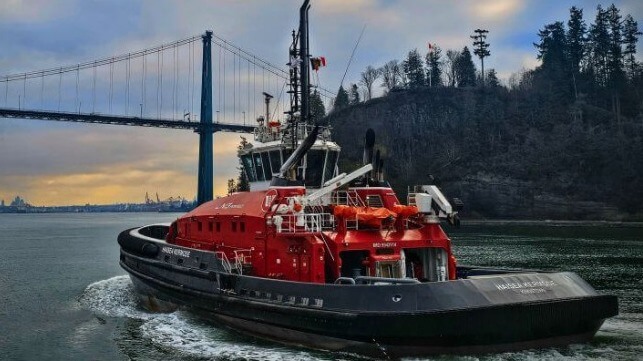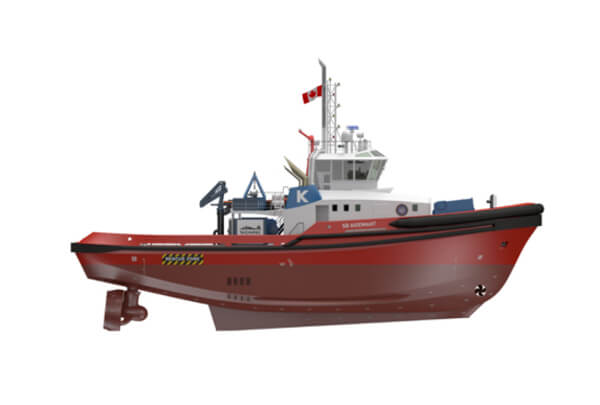Construction Begins on First Two Methanol Dual-Fuel Tugboats

Construction recently began in Turkey on two dual-fuel methanol tugboats. While several projects are working on developing tugs powered by methanol, these two are scheduled to enter service in mid-2025 making them the world’s first large, purpose-built high bollard pull tugs fueled by methanol.
These tugs are being built at Sanmar Shipyards in Turkey. When completed, they will be employed escorting tankers supporting the Trans Mountain Expansion Project between the Westridge Marine Terminal and the harbor limits of the Port of Vancouver, Canada. The contract for the operation of the tugs was awarded in December 2021 to KOTUG Canada, a partnership between KOTUG and Canada’s Horizon Maritime Services.
The Canadian Energy Regulator imposed as a condition of the project the escort of the tankers, which will be up to Aframax class in size, to minimize the risks including grounding should a vessel become disabled for any reason. Robert Allen, well-known in tugboat design, was hired for the project and they
studied the requirements of the tugs and consulted with BC Coastal Pilots in Canada. They determined the optimum minimum tug size for the project vessels and customized the forward escort system to the pilot’s needs.
Last July, the companies confirmed that they would be proceeding with the methanol dual-fuel tug design that includes a hybrid propulsion configuration. Each vessel will be approximately 145 feet (44 meters) in length with a bollard pull capacity of 120 tonnes. Earlier reports said they would be escort-rated 9,000 horsepower tugs and will replace the existing tugs selected in 2021.

The two methanol-fueled tugs are expected to be among the first in the world when they enter service in 2025 (KOTUG)
First steel for the construction took place in Turkey on February 13 and the vessels will be named SD Aisemaht and SD Qwii-Aan’c Sarah taking names from the First Nation people who are also participating in the project. Among the other features, the tugs will be equipped with a mechanical cross-link system (Schottel SY Drive azimuth thrusters) to enable a single engine to drive two thrusters. They report that this will significantly reduce fuel consumption. They also plan to apply graphene paint to reduce biofouling. It will also enhance hull smoothness and reduce underwater noise and drag making the vessels more fuel efficient. They expect the vessels will be able to reach speeds up to 14 knots.
As part of the Canadian requirements, the tugs will also be equipped with Firefighting Class 2 equipment suitable to support a response at sea or the terminal. They also will have space for tanks and equipment to assist during an oil spill and recovery event.
These tugs follow Canada’s first fully electric battery-powered tugs which arrived in Vancouver in July 2023 to be operated by HaiSea Marine, a partnership with Seaspan. The vessels have a battery storage system to provide more than 5,200 kWh. They were designed to support the movement of LNG carriers in Vancouver harbor and will be joined by two dual-fuel LNG-powered tugs.
Another operator, SAAM Towage also recently took delivery of two battery-powered electric tugs. They will be used to move bulkers operated by Teck Resources in Vancouver Harbor.
Vancouver and British Columbia are at the forefront of the industry transitioning to a green harbor fleet. They are replacing older diesel-fueled tugs with this new generation of environmentally friendly vessels.
